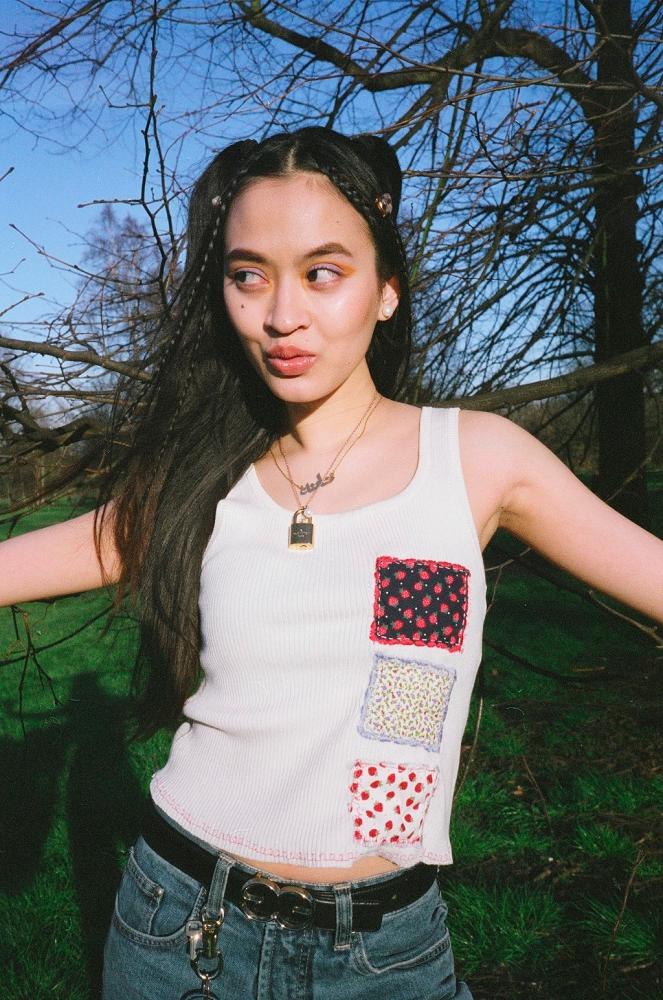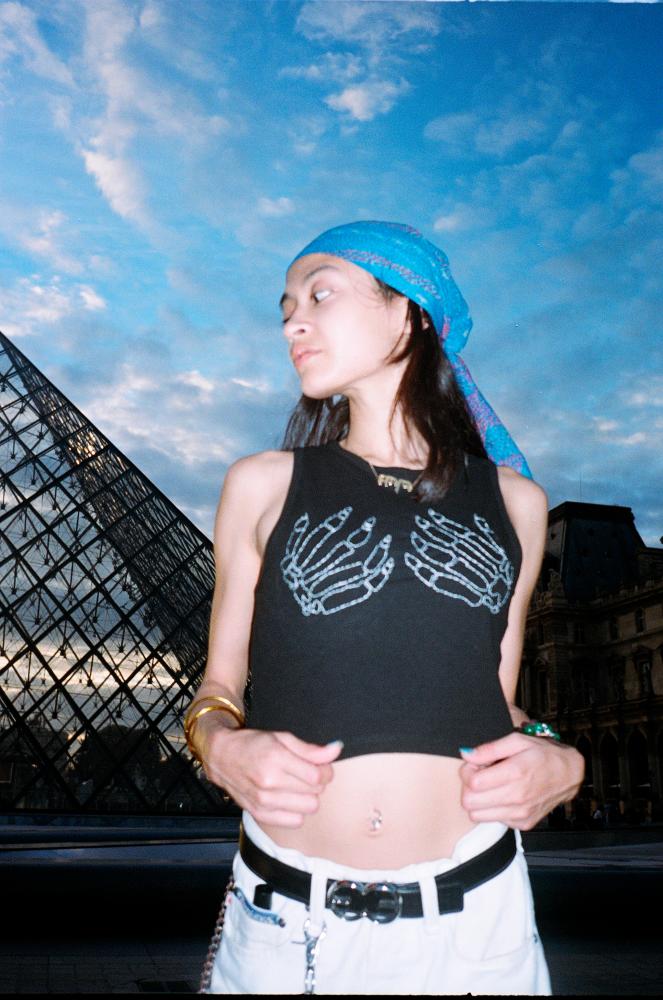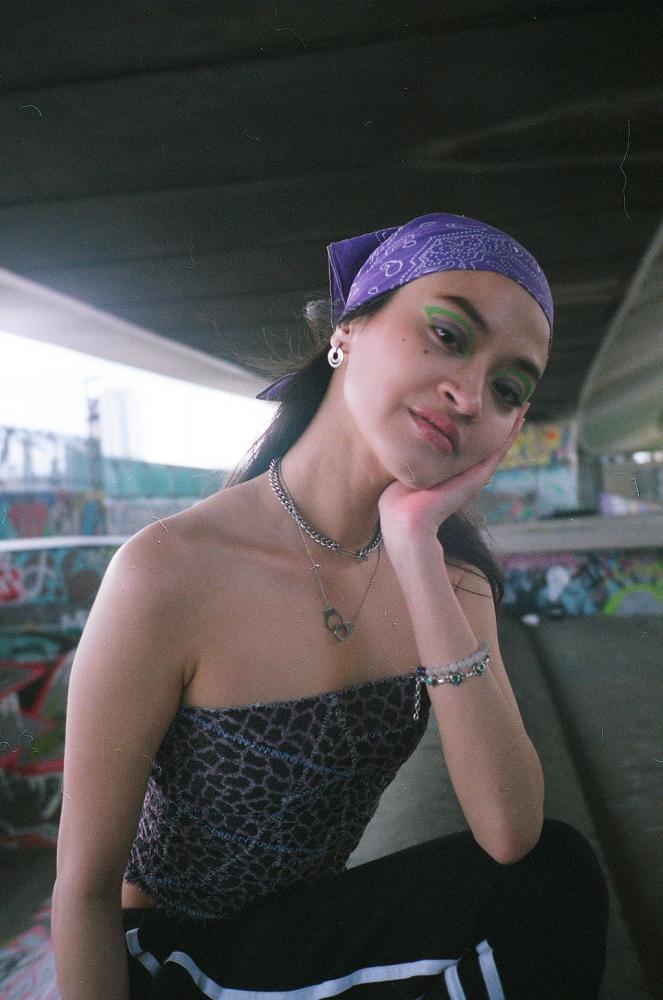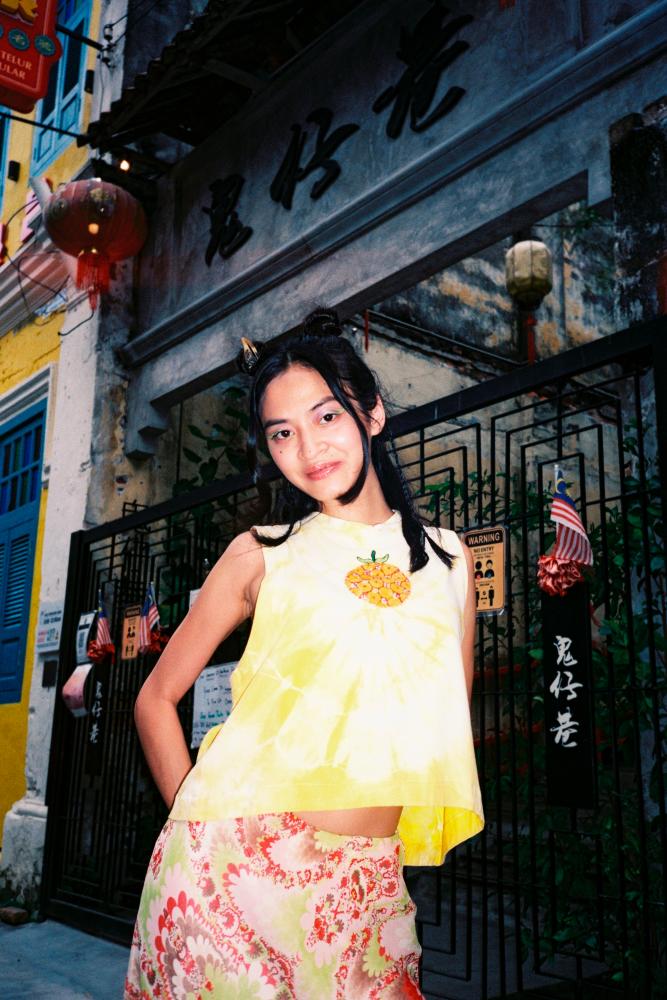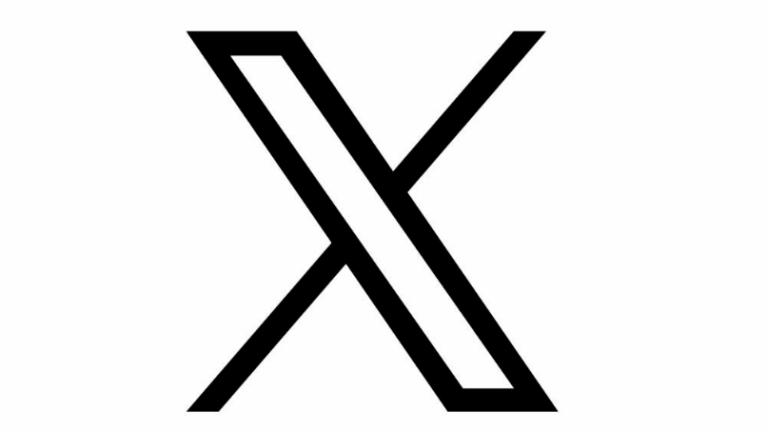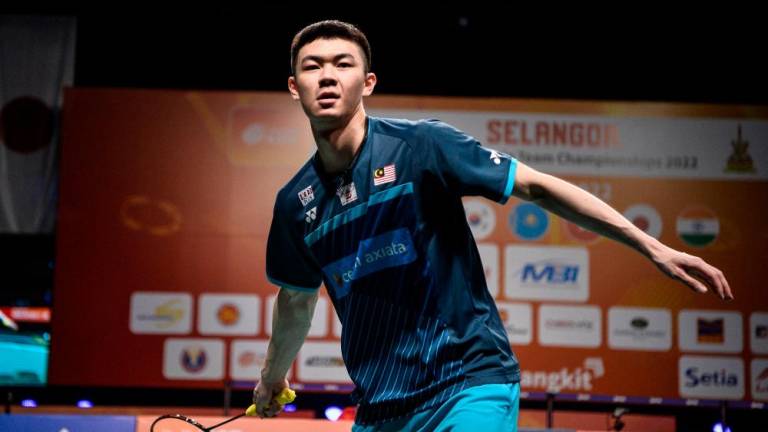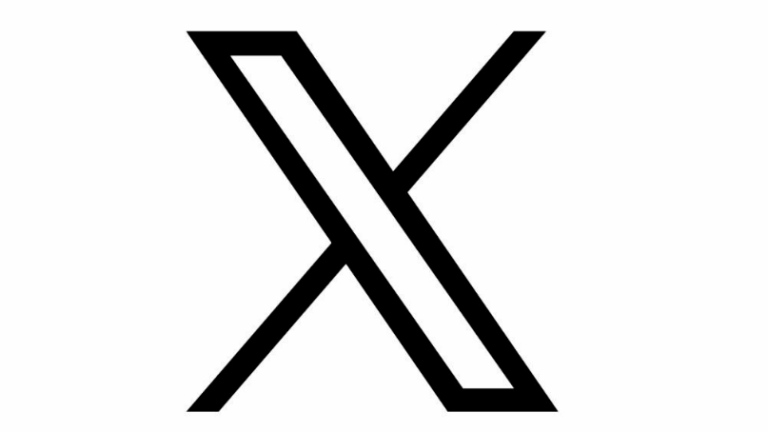THE rise of the do-it-yourself (DIY) culture and thrift-store spirit speaks to the current generation of youths, who are changing the way we perceive clothes, driven by the turning point of the fast fashion industry brought on by the Covid-19 crisis.
One DIY fashion label, StitchWorks, was founded by Hannah Nazasli (below) during the global lockdown in April last year, when she dove into the nitty-gritty of fashion design as she taught herself hand-embroidery and sewing techniques.
“I was channelling my emotions into the designs I created, and it fuelled my creativity to create a sustainable fashion brand,” she said.
“Reviving old clothes has always been embedded in me, I can proudly share that 70% of the clothes in my wardrobe are thrifted or pre-loved goods. It goes to show that you don’t have to break the bank to be fashionable or make a statement. Fashion is supposed to be fun and evergreen.
“I’d like to think of myself as a mad scientist when it comes to fashion, and I always thrift whenever I can or support pre-loved or sustainable fashion brands to balance out the critical damage that fast fashion has done to our environment.
As much as it is a fashion brand, StitchWorks is also a design studio that fosters the freedom of fearless expression and collaboration among those seeking to develop their craft. It is an authentic space for like-minded creatives, designers, artists and photographers to share and manifest their passion to work and create together.
“The aim is to be sustainable by using anything and everything you have so that nothing goes to waste,” Hannah added.
How would you describe the aesthetics of StitchWorks?
StitchWorks brings together contemporary, intricate, abstract and experimental designs with a hint of Y2K vibes while translating the storied passion and emotional energy into wearable products.
Oftentimes, I sketch out ideas when I’m inspired by nature, music and experiences, and use mediums such as beads or recycled fabrics and materials to make patchwork for the garments.
Where do you source your fabrics and materials from?
Mostly from thrift stores and charity shops, my own wardrobe or my mother’s wardrobe. Basically, I’d reuse anything that can be up-cycled instead of throwing them away. It’s amazing how second-hand or pre-loved items can be repurposed into new designs.
On that note, StitchWorks is also open for donations of pre-loved clothes. So, if you decide to spring-clean your closet and find that you have clothes you no longer wear, feel free to send them our way!
How did it all begin?
With the fashion industry being the second biggest polluter on the planet after the oil and gas industry, it’s crucial to engage with others about how slow-fashion is perceived by practising sustainable fashion and educating our peers and communities about it.
The community of DIY culture and sustainable fashion is important as we share the knowledge of how beneficial it is for the environment, community wellbeing and the general fashion culture.
Change starts with us, if each person starts to make small changes by supporting local designers who produce sustainable merchandise, it can be revolutionary.
How does one join the slow fashion movement?
It’s as easy as sharing your favourite sustainable fashion brands on social media so that your peers are aware of the movement. That includes stories about sustainability in fashion, and the negative impacts of fast fashion on workers and the environment.
Honestly, sharing knowledge is key here. There is a responsibility in how we buy and dispose our clothes, as well as knowing that the clothes made by the manufacturer were produced under good circumstances.
By supporting sustainable fashion brands, we can slowly stop the production of fast fashion goods, which end up generating an unnecessary amount of waste. You don’t have to give up glamour to be sustainable.
What is the biggest takeaway for yourself when it comes to educating people through your brand?
The biggest joy comes with sharing my stories and passions, and captivating people through the movement of sustainability and how easy it is for them to practice it themselves.
I love how people can inspire me with their positive and constructive feedback. When they ask about how the garment is made, and I say that it’s made from a recycled pair of jeans and recycled materials, it motivates me to find other reusable materials to experiment with.
How do you intend to grow StitchWorks?
I aim to make StichWorks affordable for all to use and wear. This will be done by continuing to create more sustainable designs, as I plan to release bigger collections with multiple designs each month. I will also start to introduce unisex and male designs so that the men don’t feel left out.
Ultimately, the dream is to grow StitchWorks into a creative community for those with the soul of dreamers, lovers and survivors.



